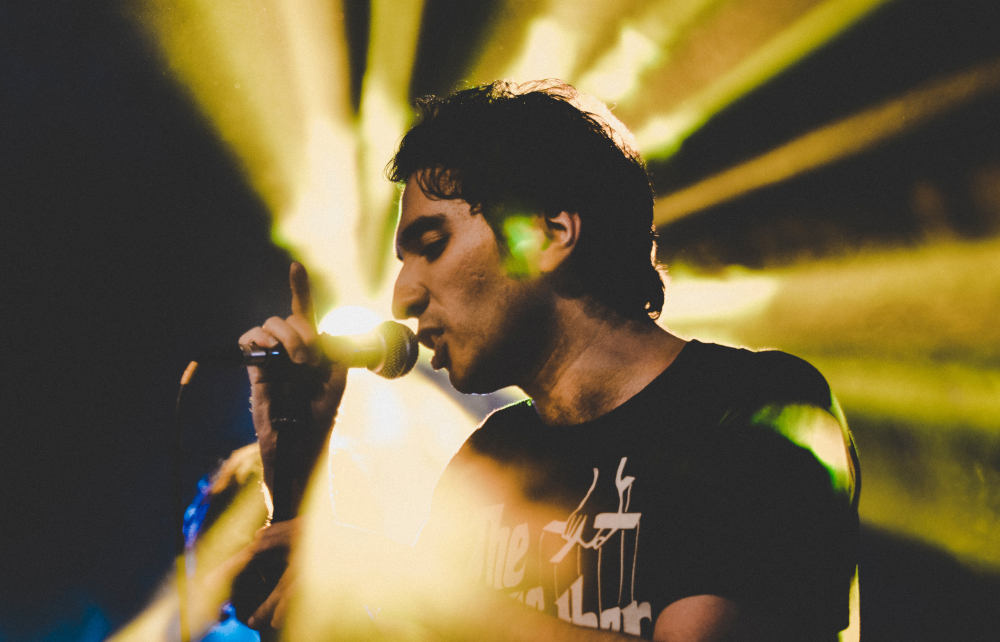It’s a milestone moment in an engineer’s career when the call comes to work with an artist whose music means something to them personally. Working with emerging artists is great fun and it can be inspiring to hear new music, perhaps introduce a band to working with monitors, and play a part in them learning their stagecraft.
But there’s a different energy that arises when the time comes to mix a band whose work you’ve grown up with; whose albums are well worn in your record collection; whose songs are familiar to the extent that you have poignant memories attached to them. These are musicians who already know their stagecraft inside out and have played to perhaps millions of fans across several decades. It’s a milestone moment to get that call – and it can also feel incredibly daunting!
The demands and expectations placed upon iconic artists are different from those placed upon new bands, and similarly, the demands and expectations of you, as their new monitor engineer, will be elevated. The stakes are high and they expect the best. They have a lot to think about and they may not have a lot of bandwidth to build a relationship with their new engineer – you may be the the latest in a long line – but there’s still the need for you to learn their preferences and to establish trust.
Every monitor engineer knows that technical know-how is only half the job – to gain mastery in this field we have to become experts at building rapport and trust, have empathy with the artist’s experience, and gain an understanding of body language and psychology. This intersection of the technical with the personal is one of my favorite parts of the job because it’s such a rich and interesting area where there’s always something new to be learned.
There’s always the potential for growth and development and for becoming more skillful in handling challenging situations, because even if you work with the same equipment each time you tour, no two humans are the same – in fact no one human is exactly the same from day to day!
Getting Started
So how, as monitor engineers, can we build fruitful working relationships with “big rock stars” who have been around the block?
First impressions count. Our initial opinions about others are formed in as little as 20 seconds, so make sure you’re presenting yourself as you want to be perceived. What does your appearance, demeanour, and general vibe say about you? Coming across as professional, relaxed, friendly and confident (without being cocky) is always a good look! You’ll probably be introduced to your new bosses by the tour or production manager, and all of the usual advice about meeting someone new applies – open body language, eye contact, big smile, firm handshake.
With that first meeting done, how do we start to create rapport on stage? My number one tip is to prepare by doing plenty of advance research to get a sense of who they are as people. Study them online by reading up on them and listening to podcasts and chat shows they’ve guested on – very easy in this day and age with well-known musicians.
What we’re looking for is an idea of what they might be like, but more importantly, what makes them tick. What sort of interests do they have? What causes are close to their heart? What matters to them? And, most crucially, what type of language do they use?
There’s an incredibly powerful rapport-building technique called reflective listening, which is used by therapists and interviewers to establish trusting relationships. I highly recommend any monitor engineer learn about this technique (or indeed, anyone who’s interested in creating better relationships).
In a nutshell, the technique has two threads. The first part of reflective listening is picking out keywords – words which someone uses frequently – and using the same words back to them within your own speech. Hearing another person reflecting our own keywords back to us creates a subconscious feeling of kinship and of being understood – a feeling of “ah, this person gets me.”
This is a hugely helpful way of establishing connection with anyone, not just rock stars! For example, suppose you’ve heard a podcast where they referred to a “safe space” – well, what a great way to describe the environment you’re working to create for them on stage! Maybe they frequently use a word like “control,” “connection” or “ease.” These are the kinds of words you can re-purpose in your conversations about monitors to help them feel that you’re on their wavelength.
Notice whether they habitually use visual, hearing, or feeling language (i.e., “I see what you mean,” “sounds like fun,” “feels better”)? Do they lean towards esoteric, ornate words, or are they more factual?
All of this is incredibly valuable intelligence in starting to understand someone’s personality and therefore how you can most effectively connect with them. Are they very dramatic in their speech, or more nuanced? That might reveal a clue as to how big of a change they’re really looking for when they ask for something up or down in their mix. We’re sound engineers; we’re used to careful listening, this is just a different way of employing that well-honed skill!
The second part of reflective listening is hearing what’s being said to you, and then summarizing it back to the person to make sure you’ve understood. Think of how a good waiter confirms your order back to you – the monitor equivalent might sound like “So, click at the start of that song, more top end on the piano to help you pitch, and a touch of compression in the high-mids of your vocal generally.” It’s really just the same thing – and yes, I’ll often take a pad and pen onto stage during sound check chats to make sure I get it right.
To continue the waiter analogy… Ask straightforward questions about preferences as you take their order. Would you like audience mics, and if so do you like them throughout the whole song, or fading up in between? Do you pitch more easily to piano or guitar? Do you like any reverb on your drums, any compression on your vocal? Just like a waiter would ask how you’d like your steak cooked!
One really helpful thing about working with artists who have been around is they often know what they want, which makes our lives easier behind the console. However, if they’ve had another engineer for a long time they may have grown accustomed to not having to ask for anything, so speaking with the previous engineer can be extremely useful, because even if they departed on unhappy terms you’ll get useful intel about potential tripwires.
It’s always worth chatting to people who have been around your new artist for a long time, including non-audio people, as they’ll all have advice about the best way to handle them. As with any human, creating relationships with big stars is all about communication.
Additional Details
With the groundwork done, two-way communication when you’re back at the console is important. Shout mics are standard for musicians, but can also be welcomed by some singers – having a switch mic “hotline” to me by the drum kit reduces frustration if something is wrong, saves them coming to the console if they want to speak to me, and can simply be comforting to help them feel they’re not alone out there.
A band’s front person in particular is incredibly exposed on stage, and anything that might help them feel supported has to be considered. When I go down this route, I check whether they’d like a verbal response from me if they speak to me during the show, or if an arm in the air to confirm I’ve heard them will suffice.
What famous artists really need in their crew is people with whom they can just be normal. Learn to read the room and their body language – if you want to have a general chat, be discerning about your moment and see whether they appear to be in a reasonably open or gregarious mood, or if they seem withdrawn and perhaps want to be left alone for now unless it’s important. Considering the level of public demand for interaction with artists they need a space to be at ease where they’re not pushed to express energy. There’s a reason so many wear dark glasses – they’re constantly on show and it’s a way of reclaiming some privacy.
Of course, if they seem open to broader conversation it’s good to create a social connection that’s not only about the gig. What are they into? Is there a point of shared interest from your research that you can weave into conversation? An interest in animals, fine tailoring, vintage shopping, and sushi are all benign subjects that I’ve chatted with artists about recently – they’re just humans at the end of the day, so try not to be intimidated by their fame or stature.
Finally, “friendly, but not friends” is a mantra that has served me well over the years. I aim for being on hand and alert, friendly and open, but not over-the-top pally with artists. I may get to know them well but they’re still my bosses, and even after many years of touring with an artist I’m mindful of maintaining a professional distance and respectful behavior. I’ve certainly witnessed it backfire for folks who become over-familiar and forget to mind their boundaries.
Building trusting relationships with artists and co-creating an audio environment in which they feel comfortable and supported in delivering their iconic work, live, to fans around the world, is a pursuit that I find incredibly fulfilling. The wonderful thing about human relationships is that there’s always more to learn, and it starts and ends with communication.
Creating a magical space to share live music is, after all, why we are all at the big rock show – the road crew, the fans, and of course the stars of the show – those big rock stars.















